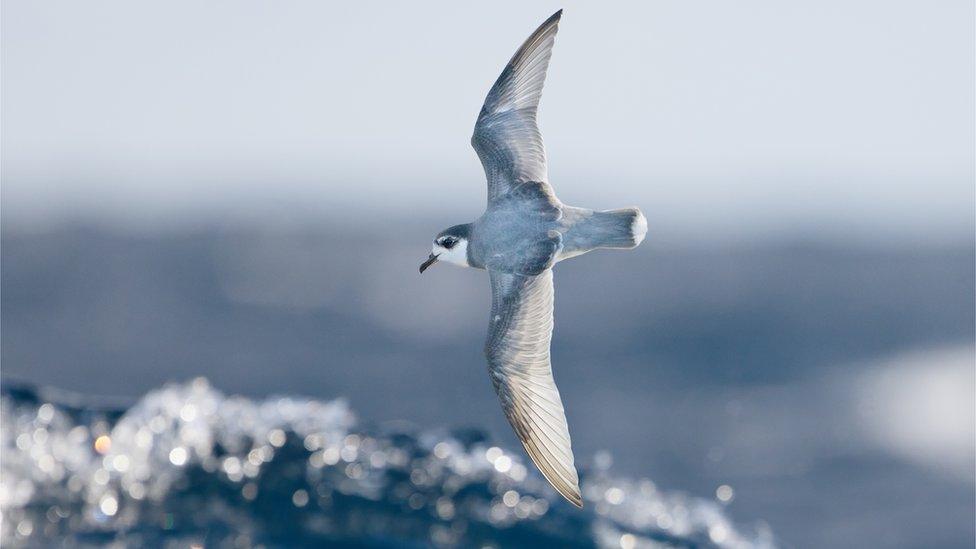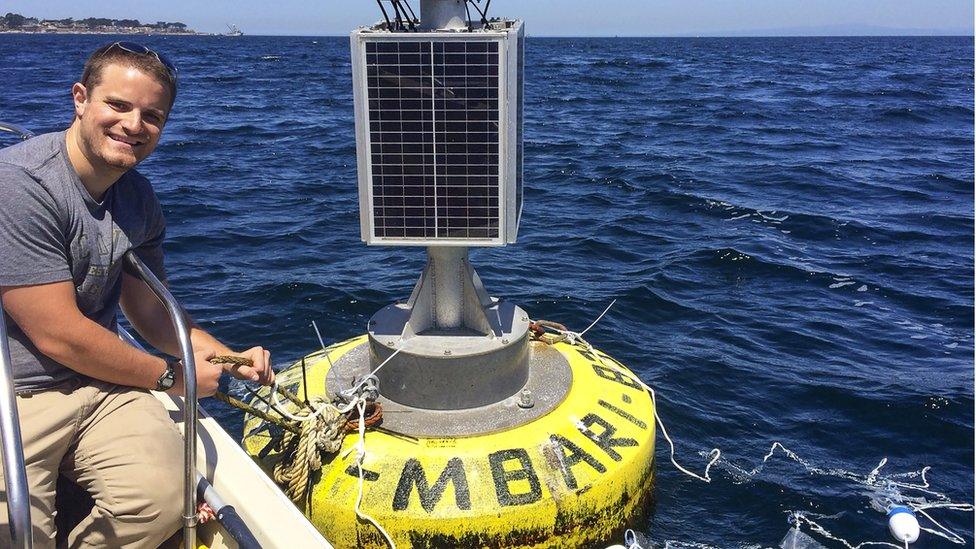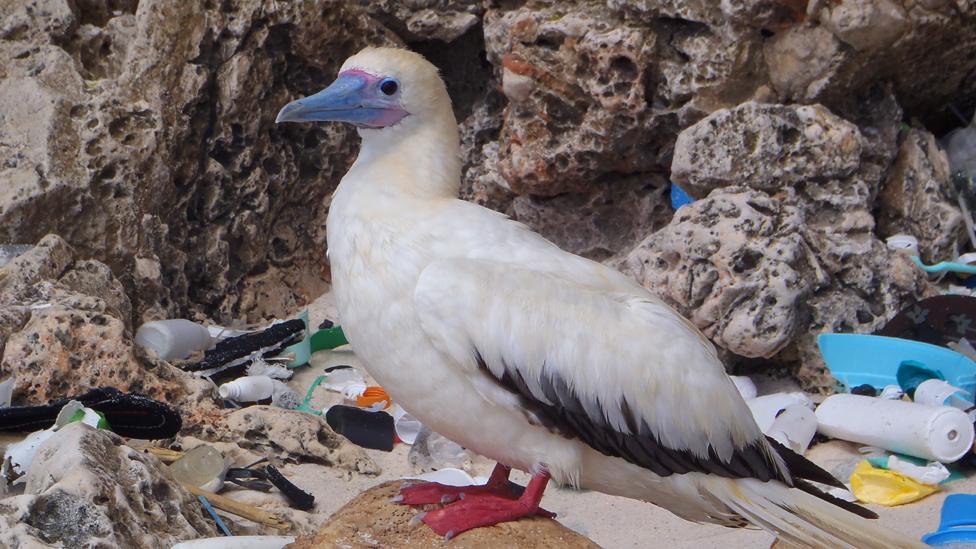Chemical clue to why seabirds eat plastic
- Published

Many species of seabirds, including Blue Petrels, consume plastic debris at sea
Plastic pollution in the sea gives off a smell that attracts foraging birds, scientists have found.
The discovery could explain why seabirds such as the albatross swallow plastic, causing injury or death.
The smell, similar to the odour of rotting seaweed, is caused by the breakdown of plankton that sticks to floating bits of plastic.
About 90% of seabirds have eaten plastic and may keep some in their bellies, putting their health at risk.
The rate of plastic pollution is increasing around the world, with a quarter of a billion tonnes of plastic waste recorded in the oceans in 2014.
Scientists think seabirds associate the smell of plastic with food - and are tricked into swallowing plastic waste.
"These seabirds actually use odours to find their way around in the world and to find food," said Matthew Savoca, of University of California, Davis.
"We found a chemical on plastic that these birds typically associate with food, but now it's being associated with plastic.
"And so these birds might be very confused - and tricked into consuming plastic as food."
Cabbage smell
In experiments, scientists at the University of California put microbeads into mesh bags and dangled them in the ocean.
After three weeks at sea, they analysed the plastic for chemical signatures.
Nothing was found on new plastic samples, but three types of plastic in the sea acquired a distinctive chemical smell.
The chemical - dimethyl sulfide - has a characteristic sulphurous odour associated with boiling cabbage or decaying seaweed.
It is also produced in the oceans through the breakdown of microscopic algae or phytoplankton, which collects on plastic.
Seabirds with a keen sense of smell, including albatrosses, petrels and shearwaters, can detect this odour, which they associate with food.

Seabirds eat plastic particles at sea mistaking them for food
Thus, smells as well as visual cues - such as shiny plastic - may attract seabirds to plastic.
Co-researcher Prof Gabrielle Nevitt, also from UC Davis, said species such as petrels were likely to be affected by plastic ingestion.
"These species nest in underground burrows, which are hard to study, so they are often overlooked," she said.
"Yet, based on their foraging strategy, this study shows they're actually consuming a lot of plastic and are particularly vulnerable to marine debris."

Deploying experimental plastic debris at a buoy in Monterey Bay, California
The researchers are calling for more research to see if other animals - such as fish, penguins and turtles - are also drawn to plastic by chemicals.
And they say it might be possible to develop plastics that either do not attract algae or break down more quickly in the environment.
Even knowing which species are most at risk based on the way they find food is informative - because it helps us - the scientific community - figure out how to best allocate monitoring and conservation effort to those species most at need," said Dr Savoca.
The research is published in the journal Science Advances, external.
Follow Helen on Twitter, external.
- Published31 August 2015
